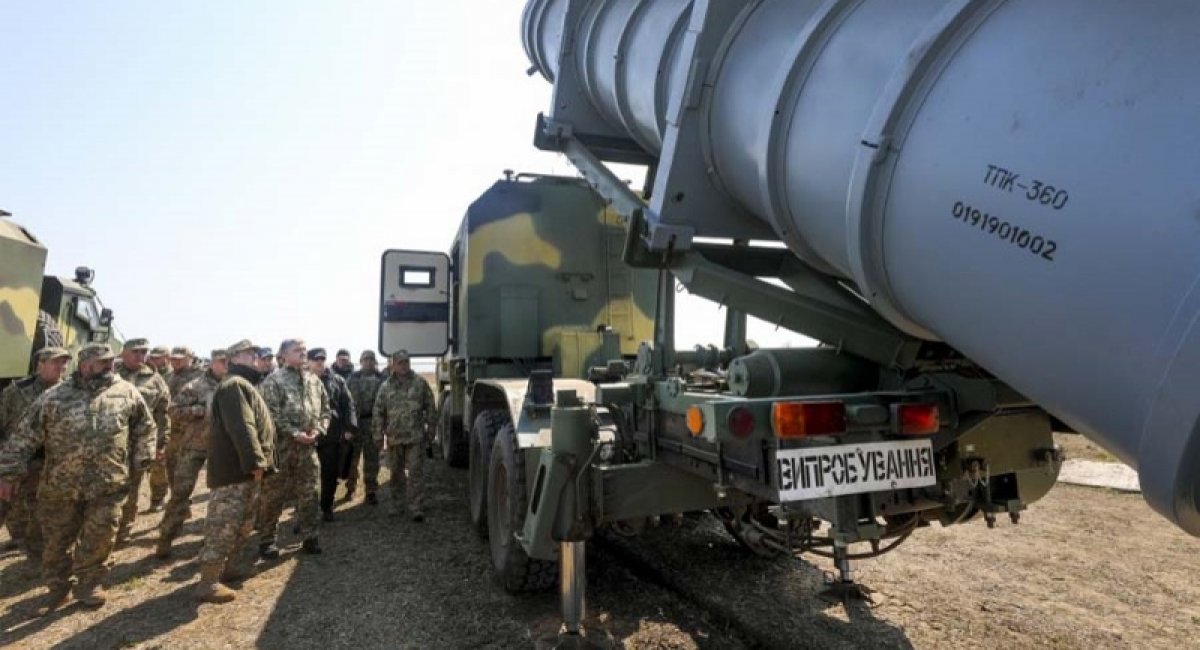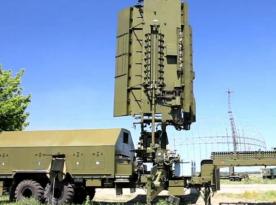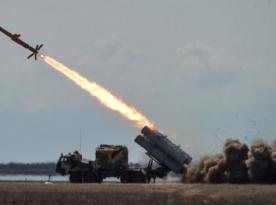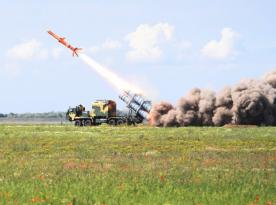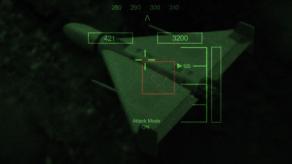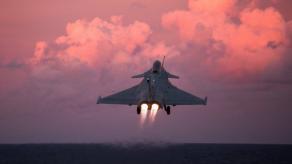Although the exact results of the tests are shrouded in secrecy thus far, there are still some insights into the new system’s configuration and capabilities.
All of the system’s components was presented during the test: launcher vehicle, transporter/transloader vehicle, transporter vehicle, and a fire command and control post vehicle.
Read more: Neptune ASCM project approaching its final lap
This shore-based ASCM system has been developed by Ukraine with maximum reliance on domestic resources and capacities. It was necessary in view of the need to save resources that are nothing but limitless in a country at war, and to expedite development and production – this all in order to provide, within the shortest possible time, the Ukrainian Navy with a weapon capability needed for securing the country’s national interests.
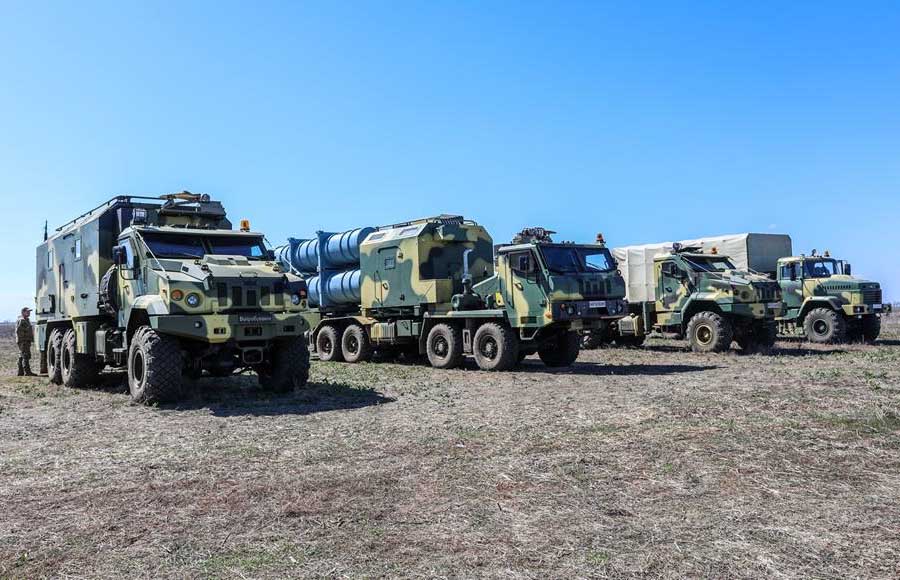
For Ukraine, the requirement to have an indigenous anti-ship missile capability is extremely urgent in view of the national security threats coming from the Russian Federation. The situation with Ukraine’s naval capabilities has worsened critically following the Russian annexation of Crimea in 2014 and the resulting loss of a major part of its naval fleet, along with shore-based ‘Rubezh’ missile batteries. The Ukrainian Navy, given its current poor condition, is unable to effectively counter Russia’s powerful Black Sea Fleet (BSF). Its capabilities are clearly insufficient to counter possible Russian offensive involving a Marine landing on the Ukrainian shore, or to face a threat of “sea denial”.
Russia, following its annexation of Crimea in 2014, has significantly built up its offensive and defensive capacities. In Crimea, Moscow deployed an anti-ship defense system comprised of components for surface targets detection at ranges up to 500 km; automated control and generation of target data; target engagement at ranges up to 350 km (this component includes ‘Bal’, ‘Bastion’, ‘Klub’ and ‘Utes’ ballistic missile battalions, warships and submarines carrying ‘Kalibr’ SLCMs, as well as BSF’s airplanes).
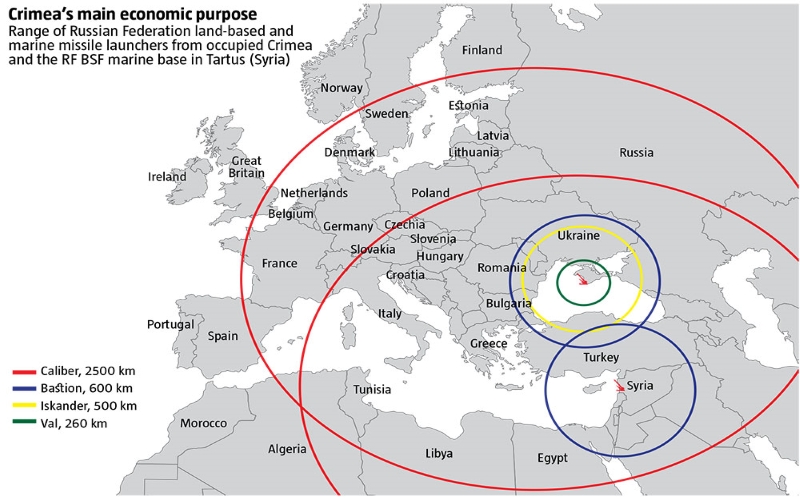
The BSF’s attack capability has been built up by incorporating Kalibr SLCM-armed warships and submarines into its fleet. In early 2019, the BSF’s fleet comprised eight Kalibr SLCM carrying combatants (two Project 11356 frigate warships and six Project 636.3. submarines) with a combined salvo of 40 missiles. The ‘Kalibr’ missile armed with a conventional warhead can engage ground targets as far as 1,500 km away, meaning it can reach any location anywhere in Ukraine, Eastern and Southern Europe and up to the German border. Its nuclear-warhead armed version has a range of 2,600 km that reaches across all of Western Europe and can reach London. The BSF has also enhanced its amphibious assault capability by complementing its fleet with new landing crafts and speedboats. This poses a threat of assault landing (of up to a battalion-size Marine force) into the Azov Sea operating area.
In response, the Ukrainian Navy has deployed a new coastal (tube) artillery brigade along with an Uragan MLRS regiment. But ground-based guns are extremely ineffective against sea-based targets.
It is therefore clear why it is so critical for the Ukrainian Navy to have an ASCM capability like the Neptune: it is needed for safeguarding territorial and Strait waters, naval bases, shore-based facilities and coastal infrastructures, and for deterring adversary amphibious landings on the Ukrainian coast.
The design of the cruise missile that comprises the core component of the coastal ASM system is optimal in economic terms. Compared to known foreign brands, the Neptune offers the required capabilities at a relatively low cost. The system is now being adjusted for use also from sea and air in addition to shore-based platforms. The configuration optimized for air launches will be designed without a canister, enabling the missile to be delivered from standard aircraft rocket launchers.
The new weapon systems armed with cruise missiles unified for ground, sea and air launches are going to significantly expand the Ukrainian Navy’s capabilities needed for defeating surface ships and critical costal infrastructures of a technologically advanced adversary, under conditions where the adversary is striking back with electronic jamming attacks and heavy counterfire. It is to be hoped that more and more new pages will be added to operational history of Ukraine’s first indigenous ASCM system, the Neptune.
Read more: Ukraine has created new missile systems



